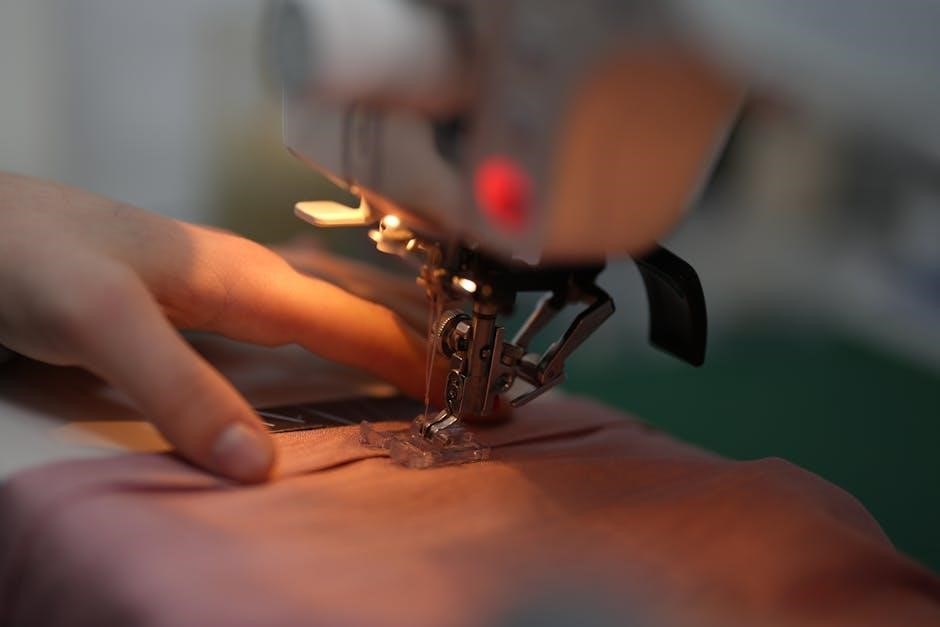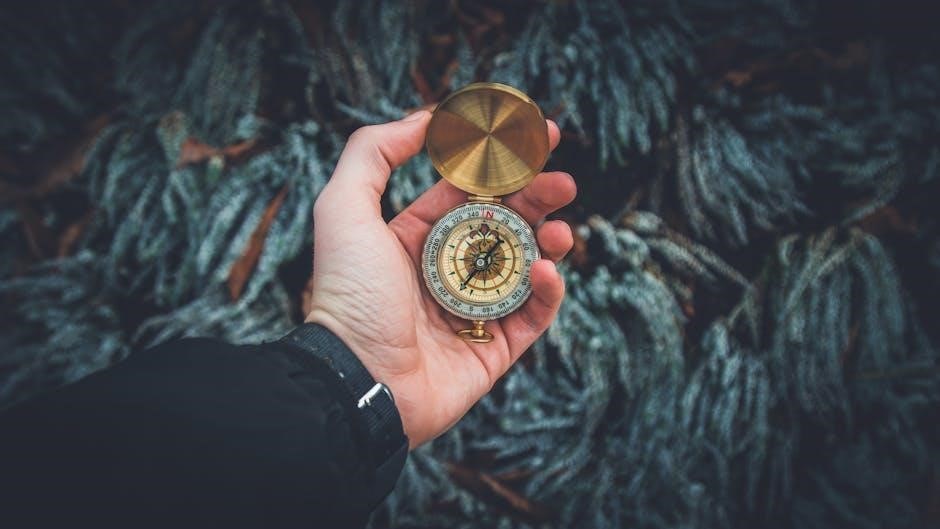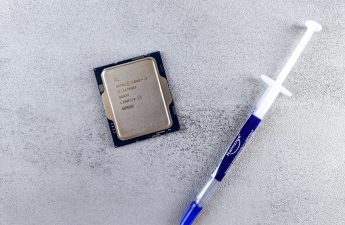Threads are the foundation of sewing, transforming fabric into durable garments and textiles. This guide explores thread types, their uses, and tips for selecting the perfect thread for any project.
1.1 Importance of Thread in Sewing Projects

Thread is the backbone of sewing, ensuring seams are strong and long-lasting. The right thread choice prevents weak spots and enhances the overall quality of your project. It is invisible yet crucial, holding fabric together and withstanding wear and tear. Whether for general sewing, heavy-duty applications, or decorative stitching, thread plays a vital role in achieving professional results. Its strength, durability, and compatibility with fabric ensure your creations remain intact for years. Choosing the correct thread is essential to avoid breakage, puckering, or uneven stitching, making it a cornerstone of successful sewing projects.
1.2 Overview of Thread Types and Uses
Threads come in various types, each designed for specific sewing tasks. All-purpose threads, like cotton or polyester blends, are versatile for everyday sewing. Specialized threads, such as metallic or elastic, are ideal for decorative stitching or stretchy fabrics. Heavy-duty threads, like nylon or polyester, are perfect for upholstery or heavy-duty projects. Blended fibers combine the benefits of different materials, offering strength and softness. Understanding the purpose of each thread type ensures the best results for your project, whether it’s garment sewing, quilting, or home decor. Proper thread selection enhances durability and aesthetics, making it a critical choice in every sewing task.
Types of Sewing Threads
Sewing threads vary widely, including all-purpose, specialized, and heavy-duty options. Each type is designed for specific fabrics and tasks, ensuring optimal results in every sewing project.
2.1 All-Purpose Sewing Threads
All-purpose sewing threads are versatile and suitable for most fabrics, offering a balance of strength and flexibility. Typically made from cotton, polyester, or a blend, they are ideal for general sewing tasks. These threads are widely available in various colors, making them a popular choice for everyday projects. Their medium weight ensures they work well for both lightweight and medium-weight fabrics, providing durability without being too bulky. Many sewists prefer all-purpose threads for their reliability and ease of use, making them a staple in every sewing kit. They are also cost-effective, offering great value for casual and routine sewing needs.
2.2 Specialized Threads (e.g., Decorative, Heavy-Duty)
Specialized threads cater to specific sewing needs, offering unique qualities for enhanced results. Decorative threads, such as metallic, glitter, or embroidery floss, add visual appeal to projects like quilting or appliqué. Heavy-duty threads, often made from strong materials like nylon or polyester, are designed for thick fabrics like denim, canvas, or leather. These threads provide exceptional strength and durability, making them ideal for industrial or outdoor applications. Additionally, elastic threads are used for stretchy fabrics, while water-resistant threads are perfect for marine or outdoor gear. Each type is tailored to meet the demands of particular projects, ensuring professional-grade outcomes and longevity.
2.3 Thread Fibers: Cotton, Polyester, and Blends
Thread fibers play a crucial role in determining strength, durability, and compatibility with fabrics. Cotton threads are natural, breathable, and ideal for projects requiring softness, such as quilting or lightweight garments. Polyester threads, known for their durability and resistance to wrinkles, are suitable for synthetic fabrics and high-stress applications. Blends, combining cotton and polyester, offer a balance of softness and strength, making them versatile for general sewing. Each fiber type has distinct properties, and selecting the right one ensures optimal results. Cotton is best for natural fabrics and high-heat projects, while polyester excels with stretchy or synthetic materials. Blends are a popular choice for their adaptability and reliability.
How to Choose the Right Thread
Choosing the right thread involves matching fiber content to fabric type, selecting appropriate weight for seam strength, and ensuring color consistency for a professional finish.
3.1 Matching Thread to Fabric Type
Matching thread to fabric type is crucial for durability and a professional finish. For natural fibers like cotton or linen, cotton thread is ideal. Polyester thread is best for synthetic fabrics, offering strength and resistance to wear. Silk or wool fabrics require specialized threads that mimic their texture and drape. Heavy-duty threads are essential for thick fabrics like denim or canvas, while elastic threads are perfect for stretchy materials like knits. Always consider the fabric’s weight, texture, and intended use to select the most suitable thread, ensuring seamless integration and longevity of your sewing project.
3.2 Understanding Thread Weight and Size
Thread weight and size play a crucial role in sewing success. Thread size is typically indicated by a number, with lower numbers representing thicker threads and higher numbers indicating finer threads. For example, a size 50 thread is medium-weight and suitable for general sewing, while sizes 60-100 are lighter, ideal for delicate fabrics like silk or lingerie. Heavier threads (size 40 or lower) are best for heavy-duty projects, such as upholstery or denim. Always match thread weight to fabric type to ensure strong, even stitches. Incorrect thread size can lead to poor stitch quality or fabric damage, so choosing the right weight is essential for professional results.
3.3 Color Matching for Seamless Integration
Choosing the right thread color is essential for a professional finish. Always select a thread that closely matches your fabric to ensure stitches blend seamlessly. For patterned fabrics, opt for a thread color that complements the dominant hue. Test the thread on a fabric scrap to confirm the match. Poor color choices can make stitches visible, detracting from the final result. For natural fibers like cotton, earthy tones often work best, while synthetic fabrics may require brighter, more vibrant shades. Proper color matching enhances the appearance of your project, making it look polished and well-crafted. This step is crucial for both functional and decorative sewing.

Threading Your Sewing Machine
Threading your sewing machine correctly ensures smooth stitching. Start by turning off the machine, then guide the thread through the upper thread guide and tension disc. Loop it around the take-up lever and insert into the needle. Proper threading prevents issues like uneven stitches or thread breakage, ensuring consistent results for all projects.
4.1 Step-by-Step Guide to Threading
Threading your sewing machine is a straightforward process when done correctly. Start by turning off the machine and unplugging it for safety. Locate the spool pin and place the thread on it. Guide the thread through the upper thread guide, usually found at the top left of the machine. Loop it around the tension disc, ensuring it’s seated properly. Next, bring the thread down to the take-up lever and pull it gently to create tension. Finally, insert the thread through the needle’s eye. Pull the thread downward to secure it and test by sewing a straight line to ensure proper tension and alignment.
4.2 Common Mistakes to Avoid
When threading your sewing machine, avoid common mistakes that can lead to thread breakage or uneven stitching. Ensure the thread is properly seated in the tension disc and guides. Incorrect threading paths or missing guides can cause misalignment. Avoid using thread that is too thick or too thin for your machine, as this can damage the mechanism. Never pull the thread too tightly, as it can disrupt tension settings. If the thread is not correctly looped around the take-up lever, it may result in loose stitches. Always refer to your machine’s manual for specific threading instructions and test sew on scrap fabric before starting your project.

Troubleshooting Thread-Related Issues
Common issues include thread breakage, uneven tension, and poor stitch quality. Adjusting tension, checking for tangles, and using the right thread type can resolve many problems quickly.

5.1 Dealing with Thread Breakage
Thread breakage is a common issue that can disrupt sewing progress. It often occurs due to improper thread tension, using a needle that’s too small, or poor-quality thread. To resolve this, check the thread guide for tangles, ensure the needle is suitable for the thread weight, and adjust the tension dial. Using high-quality thread that matches your fabric type can also prevent breakage. If the issue persists, re-threading the machine or changing the needle may be necessary. Regularly cleaning the machine and ensuring proper thread flow can help maintain smooth stitching and minimize breakage.
5.2 Adjusting Thread Tension for Optimal Sewing
Proper thread tension is essential for smooth, even stitching. If the tension is too loose, stitches may appear uneven or looped, while overly tight tension can cause fabric to pucker or thread breakage. To adjust, start by sewing a test sample on scrap fabric. If the top thread is too visible, tighten the tension by turning the dial to a higher number. If the bottom thread appears loose, lower the tension. Always test adjustments on a sample before sewing your final project. Balanced tension ensures invisible stitches on the underside and consistent results. Adjusting thread tension correctly enhances the durability and professionalism of your sewing projects.



